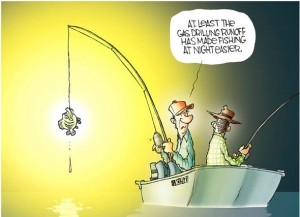Pollarizing important issues is not helpgul. Where fraacking is concerned, there are risks. They can be controlled by careful geological assessments of the areas in which fracking is proposed and also by avoiding densely populated areas. The US has been more measured in its response than Europe has. Facing a cold winter, and cut off or Russian gas supplies as retaliation to sanctions, Europeans are now wondering if they have approached this volatile issue in a measured way.
Fracking remains almost taboo in Europe. France has banned it, with Environment Minister Segolene Royal calling it a “very dangerous technique” and the benefits of shale gas a “mirage.” Germany said in July it would ban fracking at depths of less than 3 kilometers (1.9 miles), which effectively outlaws the practice for most companies. A July joint report by Scientists for Global Responsibility and the Chartered Institute of Environmental Health said U.K. rules governing shale-gas exploration don’t do enough to safeguard public health.
While environmental considerations remain an obstacle to shale-gas developments in Europe, the energy-cost benefits achieved in North America are unequivocal: As a result, European companies look longingly across the ocean at the burgeoning energy independence of the U.S., and complain that Europe’s drive toward a greener future puts them at a competitive disadvantage.
Whatever progress had been made in providing for Britain’s energy future has ground to a halt. The sad fact remains that, as coal-fired power stations continue to be phased out, little is coming forward to replace them. The U.K.’s National Grid agreed this week to pay three of the country’s utilities to keep three power plants running this winter as it tries to avoid brownouts. The buffer of extra capacity the country has to meet peak demand will shrink to 4.1 percent, from 6.7 percent in June. Three years ago, the cushion between supply and electricity demand was as high as 15 percent.
The rapid shrinkage of this ‘safety zone’ highlights the pressure that our energy infrastructure is under. The grid is being continually squeezed and this winter is going to be significantly less comfortable than previous years. Following the March 2011 meltdown at Japan’s Fukushima Dai-Ichi installation, Germany shuttered nine of its nuclear power plants and said it would close the remaining eight by 2022. France, which relies on nuclear energy for about three-quarters of its power, aims to reduce that to 50 percent by 2025. The U.K.’s winter power worries are exacerbated by the closure of four of Electricite de France’s nuclear reactors in Britain since August for safety investigations.
Some progress on adding supply is being made. This month, the U.K. won approval from the European Commission for the nation’s first nuclear project in two decades, a 24.5 billion pound ($23 billion) power station at Hinkley Point in southwest England, to be built by Electricite de France. The government is providing bond guarantees to finance the plant.
None of the current methods for powering homes and businesses is perfect. Burning coal is dirty and bad for the environment; the shale lobby hasn’t convinced either the public or lawmakers that fracking doesn’t cause earthquakes and poison the water supply; and nuclear power produces toxic waste that endures for centuries.
European governments are beginning a new conversation about energy security.
